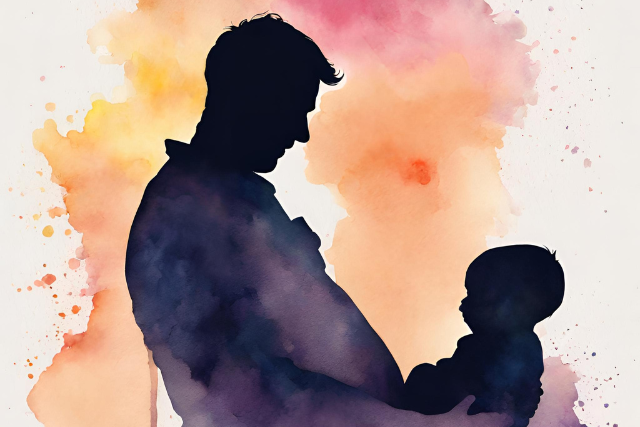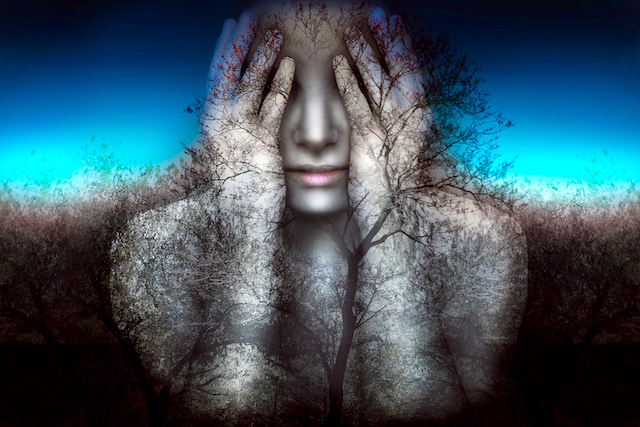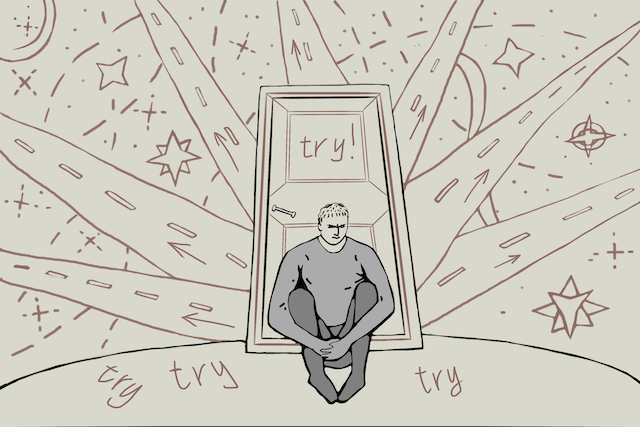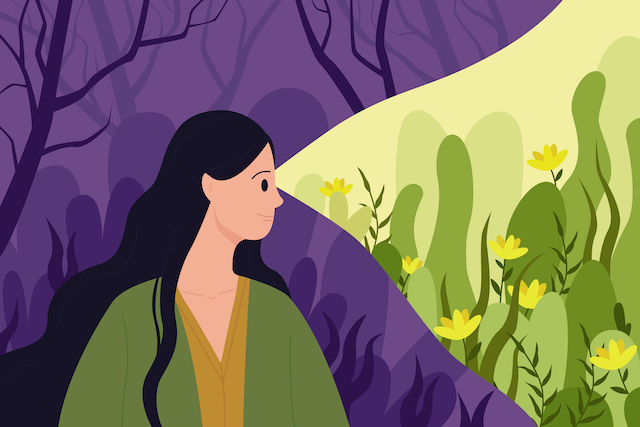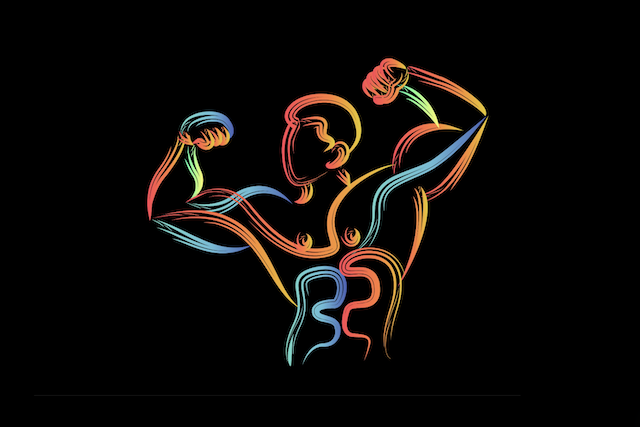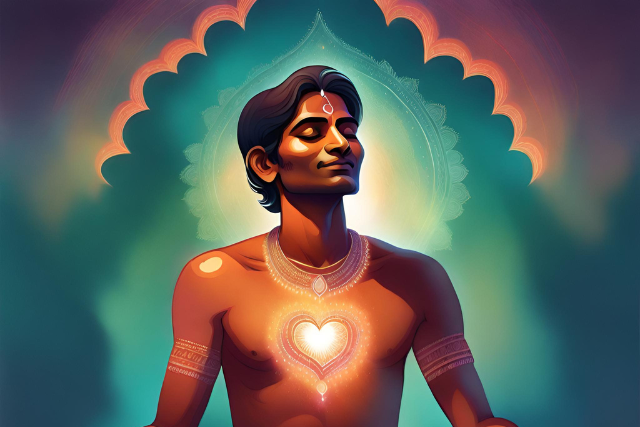
“Solitude is where one discovers one is not alone.” ~Marty Rubin
“No one invites me to their party.” That’s what middle school was like for me, anyway. No matter how hard I tried, I could never really fit in with any friend groups.
It seemed like everyone got the instructions on who to hang with and where to sit except me.
I was the serious, quiet type. And the gossipers and sleepover crews didn’t want serious and reserved. So I bounced around, making a buddy here and there. But I was never fully brought into the social scene.
At first, I figured it would sort itself out and I’d find my people. But middle school turned into high school. And high school turned into my first year of college.
I was still on the outside looking in.
No matter how often I put myself out there to try and squeeze into different circles, I’d end up alone again before long—feeling even more lonely than when I just kept to myself.
The worst part was when I pretended to be someone else, just trying to fit in. And it would work…for a minute. Then I couldn’t keep up the act anymore.
I was back to being an outsider. But now I also felt like I lost some inner part of me that made me, me. I was drained. I was bummed.
Eventually, I realized I had hit rock bottom. I was tired of criticizing myself and trying to contort into someone I was not just to please people who didn’t actually care about me.
I had already chased after so many groups and friends, desperate for that connection, but all I was left with was emptiness.
Finally, one day, I asked myself, “Who has been here through it all? The highs and lows, wins and losses?”
The answer was me, myself, and I. ‘I’ was the constant.
‘I’ was the one listening and providing answers when I talked myself through difficult situations. ‘I’ was the one patting myself on the back when I succeeded at something.
That realization—that I already had the most loyal companion imaginable—brought me more comfort than any superficial friendship or party invite could. I had myself, and I was enough.
I decided to stop begging for validation or acceptance from others. I was going to validate myself.
I started actively spending more time alone, without distractions or social media. Reading, writing, and taking myself on solo dates.
I discovered so much about my interests and strengths. I found inspiration and magic in solitude I had never known before.
For the first time in ages, I was at peace. I felt whole, not like some fractured version of myself. I was alone but not lonely. I was independent yet fulfilled.
I became my own best friend. And that made all the difference.
It taught me that I alone am enough, even if others don’t see my worth. Their approval is meaningless unless I have self-approval first.
Further, an interesting thing happened once I stopped desperately chasing friendships—I started attracting people who liked me for me. Turns out when you’re confident and self-assured, you give off good vibes that draw others in.
I made some fantastic friends in college who didn’t care that I was an introvert. And you know what’s the best part? I even found my love partner! Everyone valued my insight and quiet persistence.
For the first time, I felt like I belonged while still being fully myself.
I learned four vital lessons from my lonely middle school days:
1. You are your own best friend or worst critic. How you talk to yourself matters. Build yourself up rather than tear yourself down.
2. Embrace what makes you different. Don’t hide your unique gifts and talents away in some quest to fit in. The right people will appreciate them.
3. Connections can’t be forced. Friendships and relationships worth having tend to come when you least expect them. Stop chasing and let things unfold.
4. It’s better to be “alone” than in bad company. Having toxic or fake friends is far lonelier than having just yourself.
My middle school self would never believe me if I told him one day, he’d have true friends and a partner who adores his little quirks.
But by making peace with being alone, I found the relationships I had craved for so long and discovered that all the acceptance I needed was my own.
I still consider myself an introvert. I enjoy my solo time and quiet hobbies. But now I don’t feel pressured to be someone I’m not just to keep friends around. The connections I do have are based on authenticity from both sides.
And when I need advice or just someone to listen, I turn inward. I explore my feelings through journaling. I tap into my inner wisdom through long, contemplative walks alone. I’ve become my own counselor and cheerleader.
I’m so grateful that the younger me kept striving to find his place. All that perseverance led me right where I needed to be—firmly rooted in myself.
If you’ve been going through something similar, I see you. And I want you to know that you are enough, exactly as you are. You don’t need to earn a spot at anyone’s table for your life to have meaning.
The people who will love you most deeply are on their way. For now, love yourself. Treat yourself kindly. Pursue your passions unapologetically.
Speak encouraging words into the mirror each morning. Put in the work to be your best friend.
And know that wherever you end up in life—surrounded by a tribe of people who adore everything that makes you different or embracing solitude and forging your own singular path—you can’t lose as long as you have yourself.
I am my own closest companion. You can be your own, too.
Whatever stage you’re at in your journey of self-discovery, keep going. Know that the loneliness and feelings of not belonging won’t last forever.
Have faith that things will get better, especially when you nurture your relationship with yourself above all else.
Maybe today is an awkward day where you’re struggling to find your place. That’s okay. Breathe through it. Tomorrow holds new possibilities.
Maybe you’re entering a season of solitude that first feels uncomfortable but will ultimately lead to profound growth. Lean into it entirely rather than resist it. There is a treasure to uncover.
Or maybe you have finally attracted a “tribe” that appreciates the unique shades of who you are. Congrats! But never lose sight of your own worth that exists with or without them.
Wherever you’re at, you’ve got this. And you’ve got yourself. That’s all you’ll ever really need.
So stay true to yourself. Don’t shrink parts of you to appease others. Keep taking chances on yourself, even when no one else will.
Trust that by being loyal to your own soul, you will find both inner fullness and meaningful connections with time.
For now, chin up, sweet soul. I’m proud of you for how far you’ve come. How far you’ll go from here is breathtaking. Onward.
![]()
About Varun Pahwa
Varun Pahwa is the founder of Uprisehigh.com, a website covering topics related to relationship, self-help, and spirituality. With a mission to provide helpful life advice so people don't feel alone, Varun has assisted many through dating challenges, relationship problems, and general life issues via articles and one-on-one support. His expertise helps readers improve their lives across relationships, personal growth, and more.
Get in the conversation! Click here to leave a comment on the site.
from Tiny Buddha https://ift.tt/fCpPoLh

